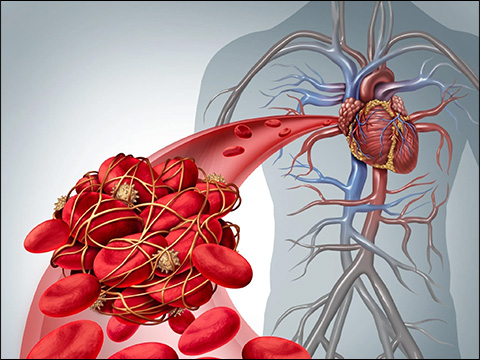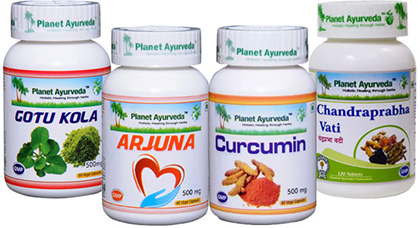Ayurvedic Treatment For Coccidioidomycosis With Herbal Remedies
Abstract
Coccidioidomycosis is also called Valley fever because this was an outbreak among farm workers in the valley of California. It is a fungal disease caused by inhaling dust or dirt contaminated with fungus of Coccidioides genus. This disease is primarily detected in southwestern United states, in some places of central and south America. This disease commonly develops in young dogs that tend to be more active outdoors, digging in dirt, following a dust storm may have a higher risk to cause this fungal infection as coccidioidomycosis.

Introduction
Coccidioidomycosis is a fungal disease caused by dimorphic fungi Coccidioides immitis or Coccidioides posadasii that affects a variety of species, including dogs. Coccidioidomycosis also known as Valley fever, california fever, desert rheumatism, san Joaquin valley fever, Dogs and cats living in and over these endemic areas are at major risk of exposure to infectious arthrospores. Pulmonary infection is caused by these fungi and results in chronic coughing. These fungal organisms grow down a few inches into soil and can live in the high temperatures of desert regions. In dogs signs of primary pulmonary disease include a cough, fever, weight loss etc. Disseminated disease occurs when the fungus has spread outside of the lungs and may include clinical signs such as lameness, pain, seizures, anterior uveitis, and localised swelling. There is an increased risk of infection associated with the amount of time spent outdoors, a larger roaming space accessed by the dog.
Causes Of Coccidioidomycosis
This disease occurs after inhalation of fungal spores.
Coccidioides that primarily existed in soil as filament form transform into hyphae and arthroconidia. These spores can be inhaled easily by mammals. On arriving at alveoli, they enlarge in size and development of septation occurs. Septation leads to formation of endospores and then these endospores spread the infection to adjacent tissues within the body of the infected individual. Nodules can form in lungs and when they rupture, their content releases in bronchi and formation of thin-walled cavities occurs and leads to chest pain and blood in the cough and sputum.
Symptoms Of Coccidioidomycosis
Symptoms are not specific for the disease but as in the starting phase of disease symptoms commonly include fever, breathlessness and cough, bronchitis or pneumonia, anorexia, and lethargy. Disseminated disease occurs when the fungus has spread outside of the lungs and may include clinical signs such as lameness, pain, seizures, anterior uveitis, and localised swelling. If the disease starts to cover other parts of the body, the symptoms will depend on involved tissue and organs. The dog may show swelling in bones, or in joints and weight loss. Enlargement in lymph nodes, nervous system dysfunction or inflamed eyes, and in aggravate stages of the skin may develop sinuses or draining tracts that are unable to heal.
Diagnosis For Coccidioidomycosis
Chest X-rays may help to make a diagnosis. It may show nodules or cavities in lungs, lung opacification, enlarged lymph nodes, and pleural effusion.
Treatment For Coccidioidomycosis
- Mild asymptomatic cases can be treated at home rather than travel to hospital.
- With severe symptoms, antifungal therapy may be prescribed.
Ayurveda is a well proven ancient science that has many benefits that are well defined in various ayurvedic samhitas. Ayurvedic treatments are beneficial for animals too. Samhitas treatment focuses on animal’s welfare and their effective management. Ayurvedic herbs can be used in daily life without any side effects and results are beneficial in disease. Main aim of ayurveda treatment is to eliminate the disorder from its roots by using the safest method and reduce the symptoms and increase the resistance power of the body as described in Ayurveda texts.
Herbal Remedies For Coccidioidomycosis By Planet Ayurveda
Planet Ayurveda is a leading ayurvedic herbal product manufacturing company and gives incredible remedies to get relief from many diseases. The products prepared by planet ayurveda are free from chemicals, preservatives and fillers. Or even treats animals with its marvellous herbal remedies. Our products are globally recognised for their effective remedies and positive results. Following are the various herbal remedies used in coccidioidomycosis –
- Gandhak Rasayan
- Mahamanjisthaghan Vati
- Kaishore Guggul
- Dermo Plan Syrup
Products Description
1. Gandhak Rasayan
Gandhak Rasayana is a mineral based Ayurvedic remedy that consists of purified sulphur. It is a well known anti-microbial, anti-viral, and antibacterial remedy. Also used as an immunity booster, hence very beneficial in cases of Coccidioidomycosis as these diseases affect those who have compromised immunity. Gandhak Rasayan is also widely used as a natural supplement for rejuvenation and blood purifier and acts as a great antifungal agent.
Dosage: 2 tablets twice daily with lukewarm water.
2. Mahamanjisthaghan Vati
This is a classical ayurvedic formulation consisting of manjistha (Rubia cordifolia) is available in tablet form and is prepared by standard extract. This remedy is a popular anti fungal and immunomodulator and is used in various respiratory ailments. It eases breathing and helps in clearing mucus and relieves cough, weakness etc.
Dosage: 1-2 tablets twice or thrice daily with lukewarm water.
3. Kaishore Guggul
This is a polyherbal formula that contains various marvellous remedies like Amalaki (Emblica officinalis), Bibhitaki (Terminalia bellirica), Haritaki (Terminalia chebula) etc. This remedy purifies the toxins that we inhale from polluted environments and having antifungal properties it is best in curing various fungal infections.
Dosage: 2 tablets twice daily with lukewarm water.
4. Dermo Plan Syrup
This syrup is a polyherbal formulation given be Planet Ayurveda that contains standardised extract of Manjishtha (Rubia cordifolia), Giloy (Tinospora cordifolia), Neem (Azadirachta indica), etc. This syrup is useful in many respiratory and skin conditions and a good blood purifier and removes toxins from blood, clears the mucus from nasal cavities and acts as a good rejuvenator.
Dosage: 1-2 teaspoons twice daily.
Conclusions
In this article we have discussed the coccidioidomycosis nasal fungal infection in dogs and its effective Ayurvedic treatment. As this disease commonly affects animals with weak immune systems, in order to treat coccidioidomycosis, one must ensure a strong and healthy immune system for the dog with the help of Ayurveda. The Ayurvedic approach is the best for clearing out the coccidioidomycosis infection by its powerful remedies as mentioned above. Ayurveda also helps to improve the immune system and enhance the quality of life by its various means of medications.





